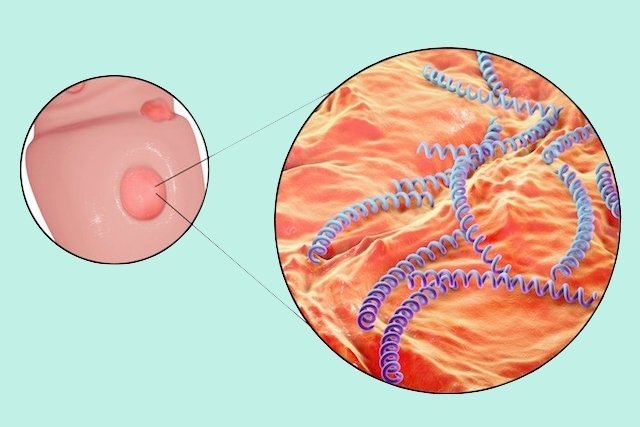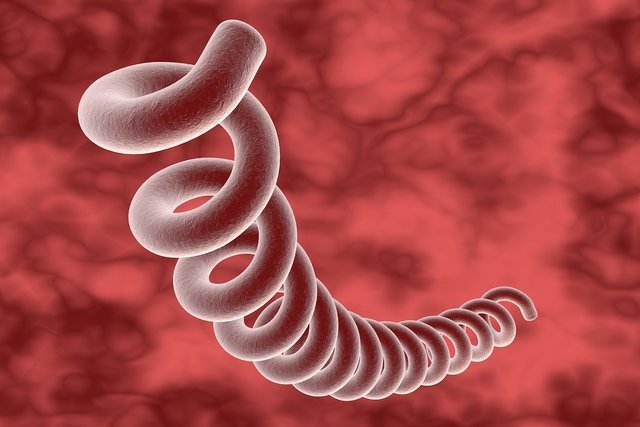Hard chancre is a small lesion that can appear in the genital, oral or anal region that is indicative of infection by the bacteria Treponema palewhich is the microorganism responsible for syphilis.
The appearance of hard chancre corresponds to the first phase of the disease, which is called primary syphilis, and often goes unnoticed, as it does not cause pain or discomfort and is often located in the anus or vagina, unable to be visualized.
Hard chancre is a very infectious lesion, as it has a large amount of bacteria in the area and, therefore, unprotected sexual intercourse favors the transmission of this bacteria. Therefore, it is important that it is identified and treated, as this makes it possible to avoid transmission to another person and the proliferation of the bacteria and spread throughout the body, giving rise to the most serious forms of the disease.

Main symptoms
The main symptoms of hard chancre are:
- Small pink lump that can develop into an ulcer;
- Raised and hardened edges;
- Clearer center of the lesion;
- It may be covered in transparent secretion;
- The lump does not hurt, itch or cause discomfort.
Hard chancre normally appears around 10 to 20 days after contact with the bacteria, which occurs through anal, oral or penetrative sexual intercourse without a condom. Thus, hard chancre can appear in the mouth, tongue, anus, penis or vagina
In men, hard chancre can be identified more easily, as it most often appears on the penis, however, in the case of women, identifying hard chancre is more difficult, as it usually appears on the labia minora and the wall of the vagina.
Furthermore, identifying hard chancre is difficult because it disappears naturally after 4 to 5 weeks, without leaving scars or leading to the appearance of other signs or symptoms. However, the disappearance of hard chancre is not a sign of a cure for the disease, but rather that the bacteria is spreading throughout the body and can lead to the appearance of other symptoms as it develops. Find out more about syphilis.
How to confirm the diagnosis
Because it does not hurt or cause discomfort, hard chancre is most often identified during routine gynecological or urological examinations, in which during the physical examination the doctor identifies the presence of a small pink lump or red ulcer in the genital region.
To confirm that it is hard chancre, the doctor can perform a scraping of the wound to assess the presence of bacteria in the area or request a test for syphilis, known as VDRL, which indicates whether or not there is infection by syphilis. Treponema pale and in what concentration the bacteria is present in the body. Understand how VDRL is done and how to understand the result.
Consult the nearest doctor so that the diagnosis can be made and the most appropriate treatment can be started:
Taking care of your health has never been easier!
How the treatment is carried out
Treatment for hard chancre is done with Penicillin injections, the dose and duration of which must be recommended by the doctor according to the results of the tests. It is important that during and after treatment the person undergoes a syphilis test to know whether the treatment is effective. See more details about the treatment for syphilis
How to prevent
To prevent the appearance of hard chancre it is necessary to reduce the risk of contact with the bacteria Treponema pale and, for this, it is important that a condom is used during sexual intercourse, even if there is no penetration. This is because hard chancre is highly contagious and, therefore, the bacteria can be easily transmitted from one person to another.
Check out the video below for more information about syphilis:
Bibliography
- MAHON, Connie R.; LEHMAN, Donald C. Textbook of Diagnostic Microbiology. 6 ed. St- Louis, Missouri: Elsevier, 2019. 524-525.
- BARRER, Michael R et al. Medical Microbiology: A guide to microbial infections – pathogenesis, immunity, laboratory investigation and control. 19 ed. Elsevier, 2018. 318-319.
- MINISTRY OF HEALTH. Syphilis. Available at: <http://www.aids.gov.br/pt-br/publico-geral/o-que-sao-ist/sifilis>. Accessed on February 18, 2020
- MINISTRY OF HEALTH. Syphilis: what it is, causes, symptoms, treatment, diagnosis and prevention. Available at: <https://www.saude.gov.br/saude-de-az/sifilis>. Accessed on February 18, 2020

Sign up for our newsletter and stay up to date with exclusive news
that can transform your routine!
Warning: Undefined array key "title" in /home/storelat/public_html/wp-content/plugins/link-whisper-premium/templates/frontend/related-posts.php on line 12
Warning: Undefined array key "title_tag" in /home/storelat/public_html/wp-content/plugins/link-whisper-premium/templates/frontend/related-posts.php on line 13





